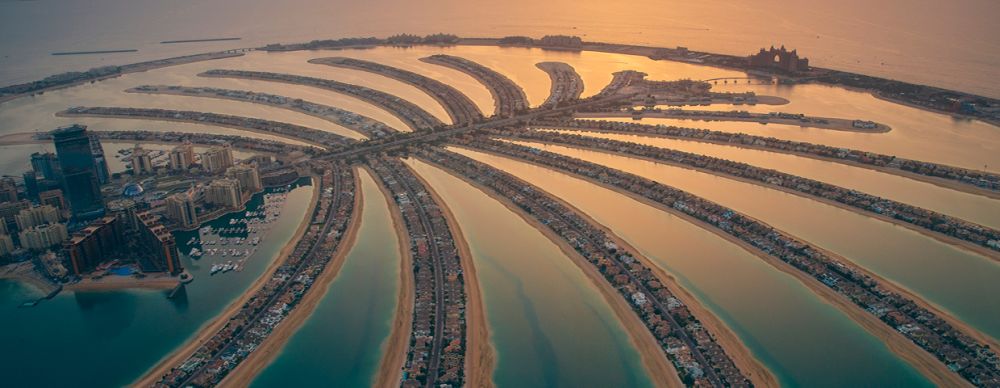

The Palm Jumeirah, an extraordinary feat of engineering, is a series of artificial islands in Dubai, United Arab Emirates, that was fashioned in the shape of a palm tree when seen from above. Its history of tourism is intertwined with the story of Dubai's rapid development and its ambition to become an unparalleled tourist destination.
The idea for the Palm Jumeirah was first conceptualized in 2001 as part of Dubai's strategy to increase international tourism. The construction began in 2001 by Nakheel, a property developer in Dubai. Through a process known as land reclamation, millions of cubic meters of sand were dredged from the bottom of the Persian Gulf and then sprayed and “vibro-compacted” into shape using GPS technology for precision. The construction of the Palm Jumeirah was completed in 2006, immediately making it a new icon on the global map for luxury and exclusivity.
The Palm Jumeirah quickly caught the world's attention. It was billed as 'the Eighth Wonder of the World' due to the scale of its vision and unapologetic grandeur. High-end hotels, luxury villas, exclusive beachside apartments, and marinas were all part of the plan. The first residents moved in during 2007, but it was the opening of Atlantis The Palm, a resort with a water park and the Lost Chambers Aquarium, in September 2008 that signified the arrival of Palm Jumeirah as a major tourist destination.
Since its opening, the Palm Jumeirah has seen continuous development. New hotels, resorts, and attractions have been built, among them some of the world’s most prestigious hotel brands. The expansion also included a dedicated monorail to help visitors navigate the island and provide an exclusive experience.
In more recent years, tourism at Palm Jumeirah has evolved to offer more than just luxury accommodation and beach holidays. Eco-tourism initiatives have been introduced which highlight sustainability and environmental awareness, aligning with global trends in responsible travel. Wellness tourism has also seen a rise, with many resorts offering comprehensive health and wellness programs. The Palm Jumeirah has an array of fine dining restaurants, cafes, and boutiques, further enhancing its appeal as a comprehensive tourist destination.
Palm Jumeirah's tourism sector, like many others worldwide, was affected by the global events such as the 2020 COVID-19 pandemic. However, Dubai's effective management and rapid response allowed Palm Jumeirah to remain a top-tier destination with tailored approaches to health and safety that reassured tourists.
Looking ahead, the tourism offering in Palm Jumeirah continues to grow with the development of new projects that promise an even more diversified and immersive visitor experience. Innovations in hospitality, entertainment, and leisure facilities are in the pipeline, firmly keeping Palm Jumeirah at the forefront of tourism trends and solidifying its status as a premier destination.